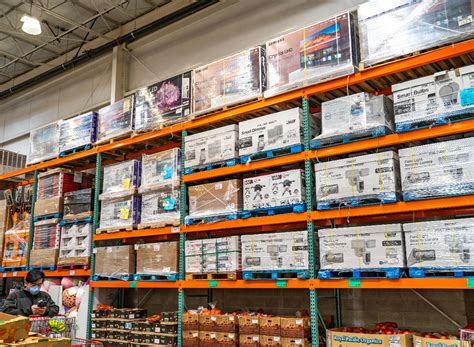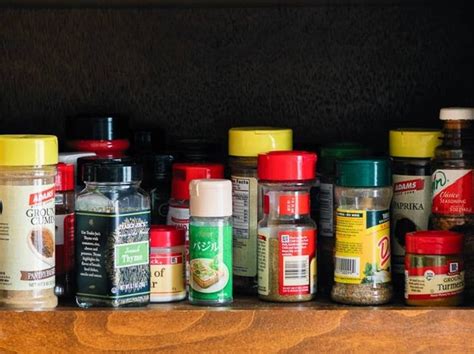
Costco shoppers are being warned to avoid purchasing the Cuisinart Air Fryer Toaster Oven (Model TOA-60/TOA-65) due to a recall prompted by a potential fire hazard. The U.S. Consumer Product Safety Commission (CPSC) announced the recall of over 666,000 units in the United States and an additional 27,000 in Canada, citing overheating issues that pose a significant risk of fire.
The recall specifically impacts the Cuisinart Air Fryer Toaster Oven, models TOA-60 and TOA-65, sold at major retailers including Costco, Best Buy, Amazon, and directly through Cuisinart’s website between January 2018 and December 2022. The CPSC warns that the appliance can overheat, leading to potential fires and burn hazards.
Consumers who own the recalled Cuisinart Air Fryer Toaster Oven are advised to immediately stop using the appliance and contact Cuisinart for a free repair. The repair involves replacing the unit, ensuring consumer safety.
Cuisinart Air Fryer Toaster Oven Recall: A Detailed Look
The Cuisinart Air Fryer Toaster Oven, a popular kitchen appliance known for its versatility and convenience, has been recalled due to a serious safety concern. The U.S. Consumer Product Safety Commission (CPSC) issued the recall notice, highlighting the risk of overheating, which can lead to fires and burns. This recall affects a significant number of units sold over a period of five years, underscoring the potential impact on consumers.
Recall Specifics and Affected Models
The recall involves Cuisinart Air Fryer Toaster Ovens with model numbers TOA-60 and TOA-65. These models were widely available for purchase at major retailers across the United States and Canada, including Costco, Best Buy, and Amazon. Additionally, they were sold directly through Cuisinart’s website, further expanding their reach. The affected units were sold between January 2018 and December 2022, meaning that many consumers have been using these appliances for several years.
According to the CPSC, the number of recalled units is substantial. Approximately 666,000 units are being recalled in the United States, and an additional 27,000 units are being recalled in Canada. This large-scale recall indicates the widespread use of the affected Cuisinart Air Fryer Toaster Ovens and the potential risk to a significant number of households.
The Overheating Issue and Potential Hazards
The primary reason for the recall is the risk of overheating. The Cuisinart Air Fryer Toaster Oven can overheat during normal use, posing a fire hazard to consumers. Overheating can lead to several dangerous outcomes, including:
- Fire: The appliance may catch fire, potentially spreading to surrounding areas and causing significant property damage.
- Burns: Consumers who come into contact with the overheated appliance may suffer burns. This risk is particularly high for those who are unaware of the recall and continue to use the appliance.
- Smoke and Fumes: Overheating can produce smoke and fumes, which can be harmful to inhale and may trigger smoke alarms.
These potential hazards underscore the seriousness of the recall and the importance of taking immediate action if you own one of the affected models.
Consumer Actions and Remedies
The CPSC and Cuisinart are urging consumers who own the recalled Air Fryer Toaster Ovens to take the following steps:
- Stop Using the Appliance: Immediately discontinue using the Cuisinart Air Fryer Toaster Oven. Do not attempt to repair the appliance yourself.
- Contact Cuisinart: Contact Cuisinart to arrange for a free repair. The repair involves replacing the unit with a new, safe version of the appliance.
- Provide Proof of Purchase: When contacting Cuisinart, be prepared to provide proof of purchase, such as a receipt or order confirmation. This will help expedite the repair process.
- Follow Instructions: Follow the instructions provided by Cuisinart for returning the recalled unit and receiving the replacement.
Cuisinart has established a dedicated website and customer service hotline to assist consumers with the recall process. Consumers can visit the website or call the hotline to obtain more information and initiate the repair process.
Retailer Involvement and Communication
Retailers such as Costco, Best Buy, and Amazon are also playing a role in communicating the recall to their customers. These retailers are contacting customers who purchased the affected Air Fryer Toaster Ovens to inform them of the recall and provide instructions on how to obtain a repair.
Retailers are also removing the recalled models from their shelves and websites to prevent further sales. This ensures that consumers are not unknowingly purchasing a potentially dangerous appliance.
Background on Cuisinart and Product Safety
Cuisinart is a well-known brand in the kitchen appliance industry, known for its high-quality products and innovative designs. The company has a long history of producing a wide range of kitchen appliances, including food processors, blenders, coffee makers, and toaster ovens.
Product safety is a top priority for Cuisinart. The company invests significant resources in testing and quality control to ensure that its products meet or exceed industry standards. However, despite these efforts, recalls can still occur due to unforeseen issues or defects.
When a recall is necessary, Cuisinart works closely with the CPSC to notify consumers and provide remedies. The company is committed to resolving safety issues quickly and effectively to protect its customers.
The Role of the CPSC
The U.S. Consumer Product Safety Commission (CPSC) is an independent agency of the United States government responsible for protecting the public from unreasonable risks of injury or death associated with consumer products. The CPSC works to ensure the safety of thousands of consumer products, including appliances, toys, and furniture.
The CPSC has several tools at its disposal to protect consumers, including:
- Setting Safety Standards: The CPSC establishes mandatory safety standards for consumer products.
- Conducting Product Testing: The CPSC conducts product testing to identify potential hazards.
- Issuing Recalls: The CPSC issues recalls of products that pose a safety risk.
- Educating Consumers: The CPSC educates consumers about product safety.
In the case of the Cuisinart Air Fryer Toaster Oven recall, the CPSC played a crucial role in identifying the overheating issue and working with Cuisinart to issue a recall. The CPSC also provided information to consumers about the recall and how to obtain a repair.
Impact on Consumers and Brand Reputation
The recall of the Cuisinart Air Fryer Toaster Oven has a significant impact on consumers. Those who own the affected models are inconvenienced by the need to stop using the appliance and arrange for a repair. They may also experience anxiety and concern about the potential safety risks associated with the appliance.
The recall also affects Cuisinart’s brand reputation. Recalls can damage a company’s reputation and erode consumer trust. However, by taking swift and decisive action to address the safety issue, Cuisinart can mitigate the damage and demonstrate its commitment to customer safety.
Broader Implications for the Appliance Industry
The Cuisinart Air Fryer Toaster Oven recall highlights the importance of product safety in the appliance industry. Manufacturers must prioritize safety in the design, production, and testing of their products. They must also have robust systems in place to identify and address potential safety issues.
The recall also underscores the need for effective communication between manufacturers, retailers, and consumers. Manufacturers must provide clear and accurate information about recalls, and retailers must ensure that their customers are aware of any potential safety risks. Consumers must also be vigilant and take appropriate action when a recall is announced.
Alternative Air Fryer Toaster Ovens
For consumers who are now wary of the Cuisinart Air Fryer Toaster Oven, there are several alternative options available on the market. Some popular alternatives include:
- Ninja Foodi Digital Air Fry Oven: This air fry oven is known for its fast cooking times and versatile functionality.
- Breville Smart Oven Air Fryer Pro: This model offers a wide range of cooking functions and precise temperature control.
- COSORI Air Fryer Toaster Oven Combo: This air fryer toaster oven is a more budget-friendly option that still offers a variety of features.
When choosing an alternative air fryer toaster oven, it is important to consider factors such as size, features, and price. It is also a good idea to read reviews and compare models before making a purchase.
Conclusion
The recall of the Cuisinart Air Fryer Toaster Oven serves as a reminder of the importance of product safety. Consumers who own the affected models should immediately stop using the appliance and contact Cuisinart for a free repair. By taking these steps, consumers can protect themselves from potential fire and burn hazards.
The recall also highlights the need for manufacturers to prioritize safety in the design, production, and testing of their products. By working together, manufacturers, retailers, and consumers can help ensure that kitchen appliances are safe for use.
Frequently Asked Questions (FAQ)
-
Which Cuisinart Air Fryer Toaster Oven models are affected by the recall?
The recall affects Cuisinart Air Fryer Toaster Ovens with model numbers TOA-60 and TOA-65. These model numbers can be found on the product label, typically located on the bottom or back of the appliance. “Consumers should immediately stop using the recalled air fryer toaster ovens and contact Cuisinart for a free repair, which involves replacing the unit,” according to the CPSC.
-
What is the reason for the Cuisinart Air Fryer Toaster Oven recall?
The reason for the recall is the risk of overheating. The Cuisinart Air Fryer Toaster Oven can overheat during normal use, posing a fire hazard to consumers. The CPSC warns that the appliance can overheat, leading to potential fires and burn hazards.
-
Where were the recalled Cuisinart Air Fryer Toaster Ovens sold?
The recalled Cuisinart Air Fryer Toaster Ovens were sold at major retailers across the United States and Canada, including Costco, Best Buy, and Amazon. They were also sold directly through Cuisinart’s website. The affected units were sold between January 2018 and December 2022.
-
What should I do if I own a recalled Cuisinart Air Fryer Toaster Oven?
If you own a recalled Cuisinart Air Fryer Toaster Oven, you should immediately stop using the appliance and contact Cuisinart for a free repair. The repair involves replacing the unit with a new, safe version of the appliance. You can contact Cuisinart through their website or customer service hotline to initiate the repair process.
-
How can I contact Cuisinart to arrange for a repair?
You can contact Cuisinart to arrange for a repair by visiting their website or calling their customer service hotline. The website and hotline information can be found on the Cuisinart website or in the recall notice issued by the CPSC. Be prepared to provide proof of purchase, such as a receipt or order confirmation, when contacting Cuisinart.
Expanded Context and Background Information
The recall of the Cuisinart Air Fryer Toaster Oven highlights several critical aspects of consumer product safety, manufacturing quality control, and the responsibilities of both manufacturers and regulatory agencies. To fully understand the significance of this event, it’s important to delve into the broader context surrounding recalls, the role of air fryers in modern kitchens, and the impact of such incidents on brand trust and consumer behavior.
Understanding Product Recalls
Product recalls are a relatively common occurrence across various industries, ranging from automotive to food and consumer electronics. They are initiated when a manufacturer or regulatory agency determines that a product presents a safety hazard or violates established standards. Recalls can be voluntary, initiated by the manufacturer, or mandated by a government agency like the CPSC.
The process leading to a recall typically involves:
- Identification of a Problem: This can occur through consumer complaints, internal quality control processes, or reports from regulatory agencies.
- Investigation and Testing: The manufacturer investigates the reported problem, often conducting tests to determine the scope and severity of the issue.
- Notification of Regulatory Agencies: If the investigation confirms a safety hazard, the manufacturer is required to notify the relevant regulatory agency, such as the CPSC in the United States.
- Recall Announcement: The manufacturer and regulatory agency work together to issue a public announcement detailing the recall, the affected products, the nature of the hazard, and the steps consumers should take.
- Remedy Implementation: The manufacturer offers a remedy to consumers, which may include repair, replacement, or refund, depending on the nature of the defect.
The effectiveness of a recall depends on several factors, including the clarity of the communication, the ease of accessing the remedy, and the extent to which consumers are aware of the recall. Low participation rates can undermine the effectiveness of a recall, leaving potentially dangerous products in circulation.
The Rise of Air Fryers in Modern Kitchens
Air fryers have gained immense popularity in recent years, becoming a staple in many modern kitchens. Their appeal lies in their ability to cook food with significantly less oil compared to traditional frying methods, making them a healthier alternative. Air fryers work by circulating hot air around the food, creating a crispy exterior and tender interior.
The versatility of air fryers is another factor contributing to their popularity. They can be used to cook a wide range of foods, including:
- French Fries and Onion Rings: Providing a healthier version of these classic fried snacks.
- Chicken Wings and Nuggets: Delivering crispy and flavorful results with less fat.
- Vegetables: Roasting vegetables to perfection with minimal oil.
- Baked Goods: Baking small batches of cookies, cakes, and muffins.
- Reheating Leftovers: Reviving leftovers and restoring their original texture.
Air fryer toaster ovens combine the functionality of an air fryer with that of a traditional toaster oven, offering even greater versatility. These appliances can toast bread, bake pizzas, and air fry a variety of foods, making them a convenient all-in-one solution for many consumers.
Impact on Brand Trust and Consumer Behavior
A product recall can have a significant impact on brand trust and consumer behavior. Consumers rely on brands to provide safe and reliable products, and a recall can erode that trust. The extent of the impact depends on several factors, including the severity of the hazard, the brand’s response to the recall, and the consumer’s prior experience with the brand.
A well-handled recall can actually strengthen brand trust. If a company acts quickly, communicates clearly, and offers a fair remedy, consumers may view the recall as a sign of the company’s commitment to safety and customer satisfaction. However, a poorly handled recall can further damage the brand’s reputation and lead to long-term consequences.
In the wake of a recall, consumers may:
- Switch to a competing brand: Losing trust in the recalled brand and seeking alternatives.
- Delay or avoid purchasing similar products: Becoming hesitant to buy similar products due to safety concerns.
- Share their experiences with others: Spreading awareness of the recall and influencing the purchasing decisions of others.
- Pay closer attention to product safety information: Becoming more vigilant about product safety and reading reviews carefully before making a purchase.
Manufacturer Responsibilities and Quality Control
Manufacturers have a fundamental responsibility to ensure the safety of their products. This responsibility extends from the initial design phase through the manufacturing process and beyond. Effective quality control measures are essential for identifying and preventing potential safety hazards.
Key aspects of manufacturer responsibilities include:
- Thorough Testing and Validation: Conducting rigorous testing to identify potential safety issues before a product is released to the market.
- Adherence to Safety Standards: Complying with all relevant safety standards and regulations.
- Robust Quality Control Processes: Implementing quality control measures throughout the manufacturing process to ensure that products meet safety and performance requirements.
- Monitoring of Consumer Feedback: Tracking consumer complaints and feedback to identify potential safety issues that may not have been detected during testing.
- Prompt and Effective Recall Procedures: Having procedures in place to quickly and effectively recall products that pose a safety hazard.
The Role of Regulatory Agencies
Regulatory agencies like the CPSC play a crucial role in protecting consumers from unsafe products. These agencies have the authority to:
- Set Safety Standards: Establishing mandatory safety standards for consumer products.
- Conduct Product Testing: Conducting independent product testing to identify potential hazards.
- Issue Recalls: Ordering manufacturers to recall products that pose a safety risk.
- Enforce Safety Regulations: Taking legal action against manufacturers who violate safety regulations.
- Educate Consumers: Providing information to consumers about product safety.
Regulatory agencies work closely with manufacturers to ensure that products meet safety standards and that recalls are conducted effectively. They also play a vital role in educating consumers about product safety and providing resources for reporting unsafe products.
Preventative Measures to Avoid Future Recalls
To mitigate the risk of future recalls and ensure consumer safety, appliance manufacturers can implement several preventative measures:
- Enhanced Design Reviews: Conduct more thorough design reviews to identify potential safety hazards early in the development process. This involves cross-functional teams evaluating the design from various perspectives, including engineering, manufacturing, and user experience.
- Supplier Quality Management: Implement stricter quality control measures for suppliers of components and materials. This includes regular audits of supplier facilities and testing of incoming materials to ensure they meet required specifications.
- Advanced Manufacturing Techniques: Utilize advanced manufacturing techniques such as statistical process control (SPC) to monitor and control critical process parameters. This helps to identify and address potential quality issues before they lead to defects.
- Accelerated Life Testing: Conduct accelerated life testing to simulate the effects of long-term use and identify potential failure modes. This involves subjecting the product to extreme conditions such as high temperature, humidity, and vibration to accelerate the aging process.
- Continuous Improvement Programs: Establish continuous improvement programs to identify and address root causes of defects and implement corrective actions. This involves analyzing data from manufacturing, testing, and consumer feedback to identify areas for improvement.
- Third-Party Certification: Obtain third-party certification from independent testing organizations such as UL or ETL. This provides an objective assessment of product safety and performance and demonstrates a commitment to quality.
- Finite Element Analysis (FEA): Employ FEA software during the design phase to simulate how the appliance will respond to different stress conditions. This can help identify potential weak points or areas where the design can be improved to enhance durability and safety.
- Failure Mode and Effects Analysis (FMEA): Conduct FMEA to systematically identify potential failure modes in the design and manufacturing process and assess their potential effects on product safety and reliability. This helps prioritize preventive measures and allocate resources effectively.
- Human Factors Engineering: Incorporate human factors engineering principles into the design process to ensure that the appliance is easy to use and minimizes the risk of user error. This involves considering factors such as ergonomics, visibility, and intuitiveness of controls.
- Cybersecurity Measures: For smart appliances with internet connectivity, implement robust cybersecurity measures to protect against hacking and unauthorized access. This includes encrypting data transmissions, securing software updates, and implementing authentication protocols.
Long-Term Implications for Consumers and Retailers
The Cuisinart air fryer recall also has significant long-term implications for both consumers and retailers:
For Consumers:
- Heightened Awareness: Consumers are likely to become more discerning and safety-conscious when purchasing kitchen appliances. They may spend more time researching products, reading reviews, and checking for safety certifications before making a purchase.
- Increased Scrutiny of Brands: Brand loyalty may decrease as consumers become more willing to switch to alternative brands that are perceived as safer or more reliable. Brands will need to work harder to earn and maintain consumer trust.
- Preference for Extended Warranties: Consumers may be more inclined to purchase extended warranties or protection plans for appliances to mitigate the risk of future defects or recalls.
- Greater Reliance on Consumer Reports: Consumers may turn to consumer reporting organizations like Consumer Reports for independent product testing and ratings to guide their purchasing decisions.
For Retailers:
- Stricter Supplier Audits: Retailers may implement stricter audits and quality control measures for their suppliers to ensure that the products they sell meet safety standards. This may involve conducting on-site inspections of manufacturing facilities and requiring suppliers to provide detailed documentation of their quality control processes.
- Enhanced Product Testing: Retailers may increase their own product testing efforts to supplement the testing conducted by manufacturers and regulatory agencies. This can help identify potential safety issues that may have been missed during the initial testing phase.
- Faster Response to Recalls: Retailers will need to have systems in place to quickly and effectively respond to product recalls, including removing affected products from store shelves and notifying customers who have purchased them.
- Increased Transparency: Retailers may become more transparent about their product safety policies and procedures to reassure consumers that they are taking steps to protect them.
- Emphasis on Responsible Sourcing: Retailers may place greater emphasis on responsible sourcing practices, ensuring that the products they sell are manufactured in ethical and sustainable ways. This can help build consumer trust and differentiate themselves from competitors.
By implementing these measures, both consumers and retailers can help ensure that kitchen appliances are safe and reliable for use.
The Importance of Following Recall Instructions
It is imperative that consumers follow the instructions provided by Cuisinart and the CPSC regarding the recall. Ignoring the recall and continuing to use the affected appliance can have serious consequences, including:
- Fire Hazard: The overheating issue can lead to a fire, potentially causing significant property damage and endangering lives.
- Burn Injuries: Contact with an overheated appliance can cause severe burns, requiring medical treatment.
- Health Risks from Smoke Inhalation: Overheating can produce harmful smoke and fumes, which can pose health risks if inhaled.
- Voiding of Warranty: Continuing to use a recalled product may void the warranty, making it more difficult to obtain compensation for any damages or injuries.
By taking immediate action to stop using the appliance and arrange for a repair, consumers can protect themselves and their families from these potential hazards.









